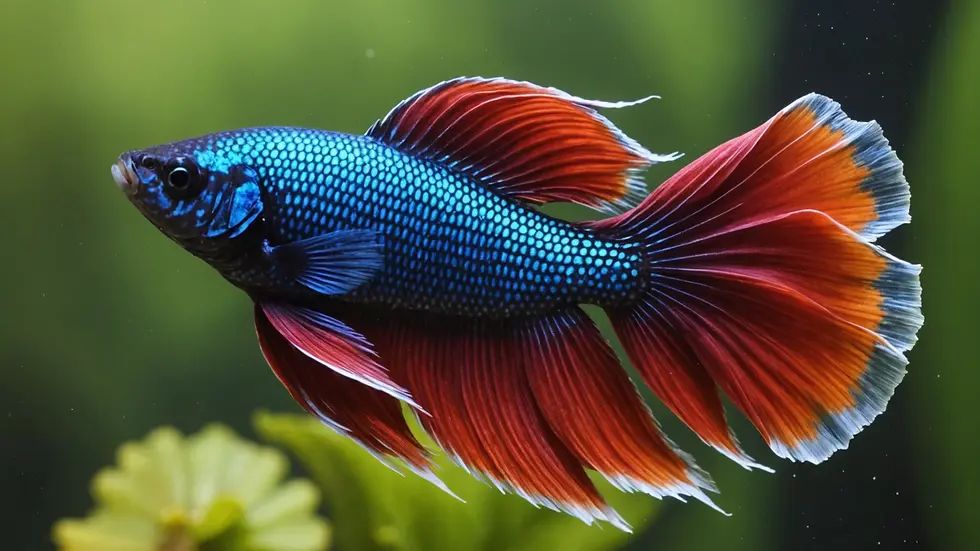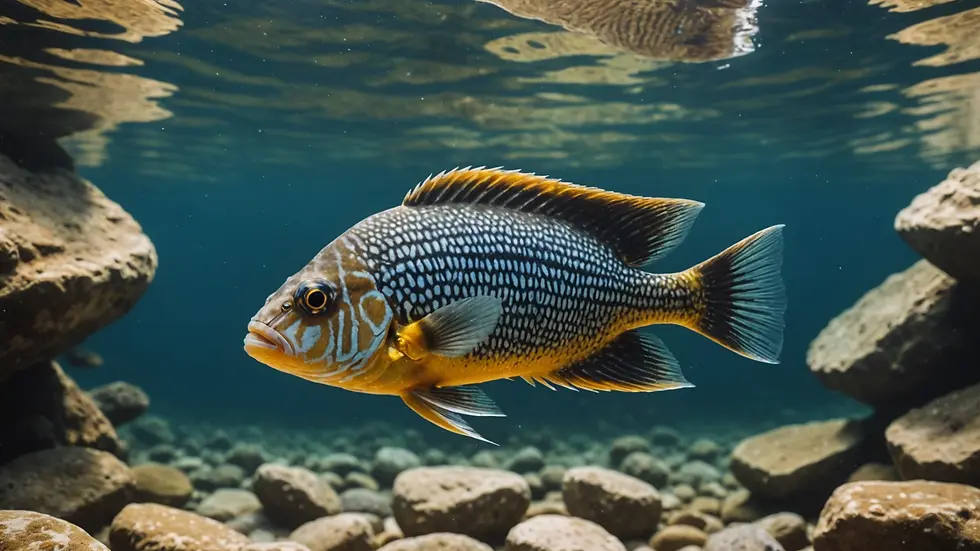Why Do Some Fish Display More Aggressive Behaviors Than Others?
- Jyotiraj Borah
- Feb 5
- 4 min read
The underwater world of fish is filled with fascinating behaviors, particularly aggression. If you've ever watched a Betta fish flare its fins or a cichlid defend its territory, you've seen this intriguing side of aquatic life. But why do some fish exhibit more aggressive behaviors than others?
In this post, we will explore the various factors that contribute to fish aggression. By understanding these factors, we can appreciate the complex reasons behind these behaviors and their implications for aquarists, researchers, and casual observers alike.
The Diverse World of Fish Aggression
Fish aggression comes in many forms, from fighting and chasing to claiming territories. These behaviors often serve critical purposes, such as ensuring survival, securing mates, and protecting resources.
Different species demonstrate unique aggressive traits influenced by genetics, environment, and social structures. For instance, while Betta fish are notorious for their fierce territorial fights, clownfish exhibit a more cooperative behavior within their anemone homes.
Evolutionary Perspective
Aggression in fish can be viewed as an evolutionary advantage. Natural selection tends to favor individuals that can effectively defend their territory, secure limited food resources, and attract mates. Aggressive fish often come out on top in environments where competition for resources is strong.
Research shows that aggressive traits can lead to increased reproductive success. For example, studies have found that male Betta fish with more aggressive behaviors tend to achieve higher mating success. This adaptation has allowed aggressive species to thrive over generations.
Environmental Factors Influencing Behavior
The environment where fish live plays a crucial role in their aggressive behaviors. Key factors include water quality, temperature, and habitat complexity.
Water Quality and Temperature
Stressful conditions often lead to aggressive behaviors. Poor water quality or unsuitable temperature can significantly discomfort fish, prompting them to act out. In fact, research indicates that fish kept in suboptimal conditions can exhibit aggression levels 20 to 30 percent higher than those in ideal environments.
Habitat Complexity
In natural environments, complex habitats with rocks, plants, and other shelters provide hiding spaces. This can reduce direct competition for territory, lowering aggression levels. Conversely, in more barren aquariums, fish may become territorial and more aggressive, as there is less room to retreat from confrontations.
Social Structures in Fish
Fish social structures play a significant role in shaping aggression levels. Many species develop hierarchies where dominant individuals must defend their status.
Dominance Hierarchy
In species with clear social orders, aggression helps maintain dominance. This can manifest through displays, chasing, or even physical confrontations.
For instance, African cichlids exhibit complex social behaviors and territoriality. In these fish, hierarchies lead to aggressive interactions, particularly in defending breeding territories. Understanding these social dynamics is essential for grasping fish aggression.
Species-Specific Behaviors
Not all fish are aggressive in the same way. Some species are more inclined towards aggression due to their unique evolutionary backgrounds.
Betta Fish
The Betta fish, commonly known as the Siamese fighting fish, is infamous for its territorial nature. Males will fiercely defend their space, showcasing vibrant colors and flaring fins to intimidate competitors. This aggression is especially pronounced when they encounter other males.
Cichlids
Cichlids provide a compelling example of species-specific aggression. Their aggression can vary significantly across species and habitats, especially during breeding periods when competition for mates intensifies. In fact, male cichlids can exhibit aggression levels that increase by up to 50 percent during this time.
Goldfish
In contrast, goldfish are generally peaceful. Their natural habitats do not typically involve aggressive behavioral displays, and they can thrive alongside other fish when kept in a suitable environment.
Gender Roles and Aggression
Gender roles significantly affect aggression in fish. Males are often more aggressive than females, especially regarding territory and mating.
Mating Battles
During the breeding season, male guppies demonstrate notable aggression. They engage in ritualized displays that can include chasing or nipping at each other to attract females. Studies show that males that display aggressive behaviors may have up to 70 percent higher mating success than their less aggressive counterparts.
Human Impact on Aggression
Human activities have a substantial impact on fish behaviors, potentially increasing levels of aggression among fish populations.
Overcrowding in Aquariums
In aquariums, overcrowding can elevate aggression. Fish that might get along in the wild may fight for space and resources when confined. Reports indicate that aggressive behaviors can increase by 40 percent in overcrowded settings.
Pollution and Climate Change
Issues such as pollution and shifting water temperatures exacerbate stress, leading to defensive and aggressive responses. Understanding these human impacts highlights the importance of responsible fishkeeping and conservation efforts to protect aquatic life.
Final Thoughts on Fish Aggression
The question of why some fish are more aggressive than others involves multiple factors. Evolutionary traits, environmental conditions, social structures, and human impacts all play significant roles.
Recognizing these influences can enhance our understanding of fish behavior, which is crucial for aquarists, researchers, and anyone curious about aquatic life. By deepening our knowledge of fish aggression, we improve our ability to care for them in captivity and promote their conservation in the wild.
Understanding the delicate balance of nature will help us preserve the ecosystems that support diverse fish populations worldwide.







Comments